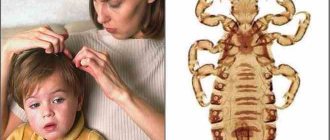What is hypothermia?
The word hypothermia literally means low temperature. This is a decrease in body temperature below 35ºC.
The body has certain defense mechanisms that work to maintain body heat. In case it is very cold, these mechanisms try to increase heat production, although sometimes this may not be enough. In this sense, when the body experiences hypothermia, it means that the functions that work to maintain body heat fail, so the body temperature drops sharply.
Hypothermia is considered a medical emergency because if you don't act quickly, the drop in body temperature can seriously damage organs such as the brain, heart, or nervous system. If it drops below two degrees, the victim may lose consciousness and die.
Thus, hypothermia is divided into three types, depending on their degree:
- Mild : This is hypothermia when the body temperature is between 33 and 35ºC. In this case, the patient experiences symptoms such as trembling, difficulty moving, or mental clumsiness.
- Moderate: Occurs when the body temperature is between 30 and 33ºC. Symptoms that characterize this hypothermia are memory loss, disorientation and a state of semi-consciousness.
- Serious: Occurs when body temperature is below 30ºC. The most common symptoms are low blood pressure, loss of consciousness and weak heartbeat.
Causes of hypothermia
Let's consider what happens when the body becomes hypothermic. All warm-blooded representatives of the fauna on the planet, thanks to the mechanism of complex natural homeostasis, maintain a constant temperature of the body and internal organs. A person in this regard is no exception - in the subcutaneous areas this indicator usually fluctuates between 36.6-36.7 degrees Celsius; the cranial cavity, thoracic and abdominal regions, and other organs and systems inside have a slightly higher temperature - from 36.8 to 38.2 degrees.
The processes of thermoregulation are controlled by the hypothalamus - when the temperature of the external environment decreases, vasoconstriction processes are activated with a decrease in heat transfer (sweating is blocked), but if this is not enough, then the mechanisms of heat production are activated with the acceleration of metabolic processes, changes in behavioral reactions, and the inclusion of the peripheral nervous system in the process (trembling, involuntary twisting etc.).
At what temperature does hypothermia occur? By the general term hypothermia as a pathological condition, doctors mean a decrease in body temperature below 35 degrees Celsius. At the same time, it is impossible to judge the degree of hypothermia based on the data of an electronic or mercury axillary thermometer alone. The indicator should be taken in a number of main locations - the esophagus, the external auditory canal, the rectum, the bladder, and the nasopharyngeal region.
The main cause of hypothermia in the vast majority of cases is external unfavorable environmental conditions - low temperatures . This problem is especially relevant in the autumn-winter period and when wearing clothes that are not suitable for the weather.
However, even if a person is dressed normally, spending too long in an uncomfortable environment can cause hypothermia over time.
Often, hypothermia due to prolonged exposure to the cold is preceded by alcohol intoxication, which does not allow an adequate assessment of the situation and masks the primary pathological subjective symptoms of a negative state.
However, the body can become hypothermic not only due to unfavorable environmental conditions. The process of hypothermia is also triggered by massive blood loss (due to transfusion or injury), the introduction of a number of solutions during medical procedures, and the consumption of certain plant poisons (for example, plants like Hemlock). The rarest factor is a disruption of the hypothalamus, which is responsible for the thermoregulation of the body as a whole, both due to its injuries and a number of diseases, syndromes, and hereditary factors.
Causes of hypothermia
Hypothermia can occur at any time and in any season because it is a loss of body heat. There are people who are more likely to suffer from it, such as the elderly, people with malnutrition, or those taking certain medications. The main causes of hypothermia are:
- Falling into cold water.
- Wearing wet clothes for long periods of time, especially if it is windy or very cold.
- Not protecting yourself from the cold or wearing the correct clothing in cold temperatures.
- Extreme exertion or not eating enough food or drink in cold weather can cause hypothermia. Remember that good function when it comes to maintaining body temperature requires a good amount of calories.
Types of Hypothermia by Cause
Depending on the cause of hypothermia, emergency medical care can be classified into different types:
- Gradual: When the temperature gradually decreases due to cold, strong wind, or inadequate clothing in cold climates.
- Acute: Also called hypothermia by immersion. This is, for example, a fast and intense heat flow, for example, when entering cold water.
- Quiet: This is gradual hypothermia by immersion. The victim spends many hours in cold water, and the loss of heat is not sudden, but gradual. Divers, fishermen or surfers are among the most affected by this type of hypothermia.
In addition to these types of hypothermia, there are others associated with failure of the body's temperature regulation mechanisms. As a rule, they are secondary and directly related to diseases such as:
- Hypothyroidism.
- Kidney failure.
- Serious infections.
- Extensive burns.
- Brain injuries (heart attacks or tumors) that affect thermostats.
- Hypothermia associated with medications such as antidepressants, tranquilizers or antipsychotics, among others.
- Excessive use of drugs or alcohol.
Risk factors
In addition to the main causes of hypothermia, there are certain risk factors that can increase the likelihood of suffering from it:
- Age. Children tend to lose heat faster than adults, and older adults have more trouble regulating their body temperature. Both groups are more susceptible to hypothermia.
- Alcohol and drug consumption. They help dilate blood vessels, which helps you lose heat more easily.
- Medicines. Some may affect the body's ability to regulate temperature, such as antidepressants, sedatives, analgesics or antipsychotics.
- Fatigue. Cold tolerance decreases when you are tired. Mental problems. People with this problem may have their behavior affected when it comes to understanding how cold weather affects them.
- Likewise, crazy people can easily get lost without taking into account the weather or clothing.
- Diseases. There are certain disorders that also affect the regulation of body heat, such as hypothyroidism, malnutrition, Parkinson's disease, cardiovascular disease or diabetes, among many others.
Causes
The causes of hypothermia causing cold injury are considered as the pathogenesis of general freezing. Freezing of the body occurs at low ambient temperatures, and low physical activity and vascular pathologies aggravate the situation.
Hypothermia in a child occurs under relatively favorable conditions, which are not dangerous for an adult. A common phenomenon is hypothermia in newborns. Babies are not able to resist even minimal cold exposure, and if the baby is not provided with optimal temperature conditions, he can get sick and even die. The cause of hyperthermia in premature newborns is the underdevelopment of the thermoregulation system. Such babies are required to be in an incubator.
Hypothermia in a child of preschool and primary school age is often associated with neglect of safety rules in the cold. Children can throw off their mittens and hat, and refuse a warm sweater or scarf.
Symptoms of hypothermia
Hypothermia is not a pathology that appears immediately, but it appears gradually as the body loses temperature. To know its symptoms, we must distinguish three different phases, each of which has a characteristic symptomatic picture:
- Phase 1: the first symptoms appear, which signal the beginning of the body's defense mechanism. It is characterized by contraction of the blood vessels of the extremities (the muscles of the arms and legs stop responding correctly) to keep vital organs warm. You may also experience chills, goose bumps, trembling, or increased heart rate and breathing.
- Phase 2: Characterized by shaking and severe chills, problems with incoordination and mobility (slow and clumsy movements). The victim becomes pale and the lips, ears or fingertips may turn blue.
- Phase 3: extreme hypothermia phase. The difficulty of moving and the blue tint of the skin are its main characteristics. But, in addition, there are cessation of tremors, drowsiness, mental confusion or strange behavior. At this stage, both the heartbeat and breathing decrease, becoming slow and weak, so that vital organs may begin to fail and even stop, which is called clinical death. Final death can occur in hours if the patient is not stabilized by hypothermia.
Stages of hypothermia[2]
| Hypothermia | Body temperature | Symptoms |
| Absent | from 36.1 to 37.2°C | Normal state of the body |
| Light | from 32 to 35°C | Trembling, crow's feet, bluish skin, confusion, speech problems, memory problems |
| Moderate | from 28 to 32°C | Shaky feet, drowsiness, hallucinations |
| Strong | up to 28°C | Stupor, respiratory arrest, cardiac arrest |
What to do in case of hypothermia
In the event that hypothermia begins to manifest itself, you must clearly define the basic principles of action to help the victim.
- If you suspect someone may be suffering from hypothermia, especially if they show signs of mental confusion or change, call for help quickly.
- If the victim is unconscious, make sure he is exhaling.
- If he is not breathing, you must begin CPR.
- Always protect the victim from the cold. Try moving it to areas with warm temperatures or covering its face with blankets or clothes. It is also important to remove it from the wind, from the cold and, if possible, from direct contact with the ground. The goal is to cool as little as possible.
- Apply warm compresses to areas that retain heat better, such as the groin, armpits, neck, or both sides of the torso.
- If the victim is conscientious, give him sweet and hot liquids, without alcohol, which stimulate the restoration of body temperature.
- Always remain on the victim's side until the requested medical assistance has arrived.
Treatment
Treatment of hyperthermic syndrome is complex and multicomponent. Achieving positive dynamics is possible with timely consultation with a doctor and implementation of all therapeutic measures.
To prevent the development of severe complications of a common cold, manifested by hyperthermic syndrome, it is necessary to begin proper treatment as early as possible. When patients choose and purchase medications at the pharmacy themselves, they make a grave mistake. Such drugs often turn out to be ineffective or even harmful. Only a doctor, after examining and examining the patient, can confirm the presence of the syndrome, determine its cause and prescribe the necessary treatment.
Urgent Care
Emergency care is carried out at the prehospital stage. Since hyperthermia leads to serious consequences and even death, first aid must be carried out competently and in a timely manner.
If the patient’s body temperature rises to 39 degrees and is not controlled by antipyretics, shortness of breath, lethargy, and convulsions develop, it is necessary to urgently call an ambulance.
Algorithm for first aid for hyperthermia:
Before the ambulance arrives, febrile patients are put to bed, given antipyretics “Paracetamol”, “Ibufen” and “Nurofen” or their analogues are administered intramuscularly. These medications can be given every 4-6 hours.
- Provide access to fresh air and unbutton clothes.
- They physically cool the body - apply ice to the stomach, groin, limbs, open windows or turn on the air conditioner, rub the skin with a solution of vinegar or alcohol. Such rubbing should be done as the skin dries.
- Baths with gradually decreasing water temperature from 37.5° to 30.0° help lower body temperature.
- With severe and shaking chills, patients are covered and a warm heating pad is applied to their legs.
- Patients are given a lot of non-hot drinks.
- A cool water enema will help bring down the temperature.
- To relieve vascular spasms and high blood pressure, antispasmodics are administered - “Papaverine”, “Dibazol”.
- Patients need to be reassured and ensured complete safety - place a pillow under their head, observe the position of the body.
What not to do in case of hypothermia
In addition to basic actions before a hypothermia event, you should know what is not recommended to do in these cases, as it may not be beneficial for the victim.
- If there are frozen areas of the body, they should not be rubbed, but rather wrapped in warm bandages or compresses.
- Never victimize hypothermic alcoholic drinking.
- Avoid using direct heat sources to warm the victim (hot water, fire, electric blankets...). This may worsen the patient's condition.
- Do not move the patient and avoid sudden movements to minimize the risk of serious cardiac arrhythmia.
If you find an error, please select a piece of text and press Ctrl+Enter.
Artificial hypothermia
However, sometimes such a state can be beneficial. For example, local hypothermia is widely used in medicine. This is a condition in which individual organs or areas of the body become cold. Metabolic processes in them decrease, their need for oxygen decreases. This hypothermia has found widespread use in surgery. It is used for surgical interventions on the peritoneal organs. Used before surgery for foot and hand injuries; when removing cataracts and glaucoma. Local hypothermia is used for reconstructive surgery on the extremities and varicose veins.







